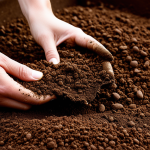The historical significance of dry stone walling in the Yorkshire Dales
Dry stone walling in the Yorkshire Dales embodies a rich cultural heritage that dates back centuries. Its origins trace to early agricultural practices when farmers needed durable, practical boundaries without mortar. These walls evolved naturally to suit the landscape’s rugged terrain and available stone, becoming a hallmark of the region’s identity.
The unique Yorkshire Dales dry stone wall history reflects a blend of necessity and artistry. Generations of skilled wallers passed down traditional craftsmanship, adapting techniques to local conditions while preserving the character of their environment. Walls were not only functional but symbolic, marking ownership and creating a sense of community.
Additional reading : Transform your york space: design a family-oriented kitchen with exciting and practical ideas
This history is more than construction; it is storytelling etched in stone. Each wall tells tales of the labor, expertise, and resilience of those who shaped the Dales. Their contributions have left a lasting impression, influencing how the landscape is experienced and cherished today. Recognizing this heritage enriches our appreciation of these remarkable structures and the lives woven into their fabric.
Essential tools and materials for authentic wall construction
Selecting the right dry stone wall materials is crucial for authentic construction. Typically, local limestone or sandstone, abundant in the Yorkshire Dales, is preferred as it matches the natural landscape and ensures durability. Using regional stone does more than preserve visual integrity; it supports structural strength due to its compatibility with the environment.
This might interest you : Revamp your cumbrian retreat: crafting a stylish and durable boot room for lasting elegance
Traditional dry stone wall tools include hammers, chisels, and crowbars. These tools allow skilled craftsmen to shape stones precisely, facilitating the interlocking techniques that make walls resilient. Modern tools, like power chisels or angle grinders, can speed up work but must be used judiciously to maintain the wall’s authentic aesthetic.
When choosing materials, it’s important to prioritize quality and weather resistance. Stones should be selected for their flatness and ability to fit snugly together without mortar, a hallmark of genuine Yorkshire Dales dry stone wall history. Durable dry stone wall materials ensure walls stand the test of time, reflecting traditional craftsmanship that has been refined over generations.
In authentic construction, every tool and material choice matters. Using local stone combined with skillful application of both traditional and modern tools guarantees walls that honor the cultural heritage embedded in the Yorkshire Dales landscape.
Core techniques in building genuine dry stone walls
Mastering dry stone wall building techniques is essential to authentically replicate the enduring walls of the Yorkshire Dales. A key starting point is meticulous preparation of the foundation, ensuring the ground is level and stable. This base supports the entire structure and prevents shifting over time, reflecting the time-honored Yorkshire Dales methods passed down for generations.
Stone layering emphasizes careful selection and placement—flat stones form stable courses, while smaller filler stones lock larger ones tightly together. This strategic interlocking imparts both strength and flexibility. Traditional walling also employs distinctive features such as through stones—longer stones spanning the wall’s width for reinforcement—and coping stones, which cap the wall and protect it from weather damage. These elements are signature markers of Yorkshire Dales craftsmanship.
Furthermore, understanding the natural contour of the land guides the wall’s alignment, which enhances resilience and aesthetic harmony within the landscape. Implementing these dry stone wall building techniques not only preserves structural integrity but also honors the cultural legacy intrinsic to Yorkshire Dales dry stone wall history. This deliberate methodology ensures walls remain functional and beautiful for generations to come.
Preserving and maintaining dry stone wall heritage
Preserving the Yorkshire Dales heritage preservation demands consistent attention to wall preservation practices. Many historic walls face threats from weathering, vegetation growth, and animal damage, which can compromise their structural integrity if left unchecked. Regular inspection and timely repair are essential for conservation.
When undertaking repairs, it is vital to use traditional walling methods that respect the original construction. Removing loose stones carefully and resetting them maintains the wall’s strength and appearance. Avoiding cement or mortar preserves the dry stone character, aligning with best practices in wall preservation.
Conservation tips include controlling invasive plants around the walls and preventing water pooling at the base to avoid soil erosion. Damage caused by livestock also necessitates protective measures like well-placed gates or buffer zones.
Several local organizations offer training and resources for maintenance and restoration, ensuring that the skills involved in dry stone wall heritage preservation are passed down. Embracing these conservation efforts helps safeguard an essential feature of the landscape, allowing future generations to continue appreciating the cultural and historical value of Yorkshire Dales dry stone walls.
Insights from local experts and the community
Local dry stone wall experts in the Yorkshire Dales emphasize the vital role of traditional craftsmanship in maintaining the integrity of these historic structures. According to master wallers, authentic construction hinges on a profound understanding of the region’s unique stone and the nuanced Yorkshire Dales dry stone wall history. Their deep knowledge ensures each wall reflects both strength and aesthetic harmony with the landscape.
Community initiatives play a critical part in supporting wall preservation. Groups often organise workshops that unite novices and experienced craftspeople, fostering skill-sharing rooted in generations of practical experience. This collaborative spirit helps sustain the traditional craftsmanship essential to Yorkshire Dales heritage.
Furthermore, experts highlight the urgency of passing down these skills to future generations to prevent loss of expertise. Apprenticeships and local training programs provide hands-on experience with dry stone wall tools and techniques, bridging the gap between historic methods and modern needs. This continuity secures not only the physical walls but also the cultural identity they embody.
In sum, the partnership between seasoned wallers and community efforts enhances awareness, ensures ongoing skills transmission, and fortifies the legacy of the Yorkshire Dales’ treasured dry stone walls.




